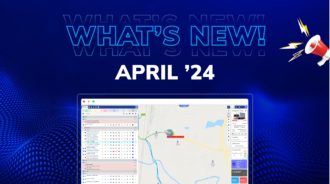In the fast-paced world of logistics and delivery services, staying ahead of the competition demands more than just speed; it requires smart, efficient, and adaptable solutions. That’s where vehicle route optimization software comes into play, transforming the landscape of delivery services. This technology isn’t just a tool; it’s a game changer in the field of advanced fleet management. In this comprehensive guide, we’ll explore the intricacies of vehicle route optimization software, its impact on rapid delivery demands, and how it is shaping the future of logistics.
Understanding Vehicle Route Optimization Software
Before delving into the benefits and applications, let’s define what vehicle route optimization software is. Simply put, it’s a technological solution that helps in planning the most efficient routes for vehicles. This involves complex algorithms that take into account multiple variables such as:
- Traffic patterns: Analyzing real-time and historical traffic data to avoid delays.
- Delivery windows: Ensuring that deliveries are made within specified time frames.
- Vehicle capacities: Maximizing the use of space in each vehicle for efficient deliveries.
- Driver schedules: Balancing workloads and considering drivers’ hours of service.
2. Integration with Other Systems:
This software often integrates with other systems such as GPS tracking, order management, and customer relationship management (CRM) software. This integration provides a holistic view of the delivery process, enhancing the overall efficiency of the operation.
3. Dynamic Route Planning:
Unlike static routing, vehicle route optimization software offers dynamic route planning. It can adapt to changing conditions like traffic congestion, road closures, or last-minute delivery requests, ensuring the most efficient route is always in use.
4. Predictive Analytics:
Advanced systems use predictive analytics to foresee potential disruptions and suggest alternate routes or schedules. This foresight helps in maintaining consistency in delivery schedules despite unforeseen challenges.
5. User Interface and Experience:
The software usually comes with a user-friendly interface, allowing dispatchers and fleet managers to easily plan, monitor, and adjust routes. The interface often includes a dashboard that provides a real-time overview of the fleet’s status, including location, route progress, and any delays or issues.
6. Customer Communication:
Some route optimization software includes features that facilitate direct communication with customers, providing them with real-time updates on their deliveries. This enhances the customer experience by keeping them informed and reducing uncertainty about delivery times.
7. Reporting and Analytics:
These tools also offer reporting and analytics features, enabling businesses to analyze their delivery operations over time. This data is crucial for identifying trends, areas for improvement, and making informed decisions about the fleet and delivery strategies.
8. Environmental Impact:
By optimizing routes, these systems also contribute to reducing the environmental impact. Efficient routes mean less fuel consumption and lower emissions, aligning with growing environmental concerns and regulations.
The Rise of Rapid Delivery Demands
The surge in e-commerce and the customer’s expectation for quick delivery have revolutionized the logistics industry. The challenge now lies in meeting these rapid delivery demands without compromising on efficiency or increasing costs. This is where vehicle route optimization software steps in, acting as a critical component in modern fleet management systems.
Integrating with Advanced Fleet Management
Advanced fleet management is no longer just about tracking vehicles. It’s about integrating various technologies like GPS tracking, data analytics, and route optimization to create a seamless, efficient system. Vehicle route optimization software plays a pivotal role in this integration, providing real-time data and insights for better decision-making.
Key Benefits of Vehicle Route Optimization Software
1. Enhanced Efficiency and Time Management:
- Optimized Routes: The software calculates the most efficient routes by considering distance, traffic, and other factors, which leads to shorter travel times.
- Multiple Stops Management: For vehicles handling multiple deliveries, the software can sequence stops in the most logical and efficient order.
- Reduced Idle Time: By avoiding traffic-congested areas and optimizing routes, the software helps reduce vehicle idle times.
2. Cost Reduction:
- Fuel Savings: More efficient routes mean less fuel consumption, leading to significant savings, especially for large fleets.
- Vehicle Maintenance: Reduced wear and tear on vehicles from shorter routes and less idling can lower maintenance costs.
- Labor Costs: Efficient routing can reduce overtime costs and ensure more deliveries are made in less time.
3. Improved Customer Satisfaction:
- Accurate Delivery Windows: Customers receive more accurate estimated times of arrival, enhancing their experience.
- Real-Time Updates: Some software offers real-time tracking for customers, increasing transparency and trust.
- Flexibility in Service: The ability to efficiently reroute on the fly can accommodate last-minute customer requests or changes.
4. Reduced Carbon Footprint:
- Eco-Friendly Routes: By optimizing routes for the shortest or fastest paths, the software helps reduce the carbon emissions of the fleet.
- Less Congestion Contribution: Efficient routing contributes to less overall traffic congestion, which is beneficial for the environment.
5. Increased Safety:
- Safe Route Planning: The software can avoid routes with known safety issues or difficult driving conditions.
- Driver Fatigue Reduction: Efficient routing means less time on the road, reducing driver fatigue and associated risks.
6. Scalability and Flexibility:
- Easily Scalable: As businesses grow, the software can scale to accommodate more vehicles and complex routing needs.
- Adaptability to Different Industries: The software can be tailored to suit various industries, whether it’s food delivery, retail, or freight.
7. Data-Driven Decision Making:
- Insightful Reports: Detailed reports on fleet performance help identify areas for improvement.
- Historical Data Analysis: Long-term data collection assists in strategizing for future operational changes or expansions.
8. Competitive Advantage:
- Staying Ahead: By optimizing routes and reducing delivery times, businesses can stay competitive in a market where speed and efficiency are key.
- Enhanced Brand Reputation: Reliable and efficient delivery services can significantly boost a company’s brand image and customer loyalty.
Trends in Vehicle Route Optimization
Staying current with trends is essential in leveraging the full potential of route optimization software. Some notable trends include:
- AI and Machine Learning Integration: These technologies enable predictive analysis, improving route planning accuracy over time.
- Real-Time Adjustments: The ability to alter routes on-the-fly in response to traffic or weather conditions is a game changer.
- Enhanced Data Analytics: Deeper insights into fleet performance and customer behaviors are shaping future logistics strategies.
Best Practices for Implementing Route Optimization
- Understand Your Needs: Assess your fleet’s specific requirements to choose the right software.
- Train Your Team: Ensure your staff is well-versed in using the software to maximize its benefits.
- Regularly Update Data: Keep your system updated with the latest information for optimal performance.
Conclusion
Vehicle route optimization software is not just a trend; it’s a necessity in the modern world of rapid delivery and logistics. By embracing this technology, businesses can enjoy enhanced efficiency, reduced costs, and improved customer satisfaction. As the logistics industry continues to evolve, staying ahead means adopting and integrating these advanced solutions into your fleet management strategy.
Remember, the journey to optimizing your delivery routes begins with understanding your needs and choosing the right software. With the right tools and approach, your business can navigate the challenges of rapid delivery demands with ease and efficiency.
Final Thoughts
As we’ve explored, vehicle route optimization software is more than just a tool; it’s a pivotal component in the rapidly evolving logistics industry. Its integration with advanced fleet management systems marks a new era in efficient and sustainable logistics. By staying informed about the latest trends and best practices, businesses can leverage this technology to not only meet but exceed the demands of rapid delivery. Embrace the change, and let vehicle route optimization software steer your fleet towards success.



